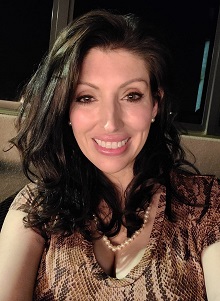A draft of ILA’s eagerly awaited Standards for the Preparation of Literacy Professionals 2017 (Standards 2017) will be available for public comment from April 17 to May 8. In the weeks leading up to the public comment period, we’ll take a look at the significant changes proposed in Standards 2017, which will be submitted for Council for the Accreditation of Educator Preparation (CAEP) approval in fall 2017 and published in early 2018. Once approved by CAEP, ILA’s new set of seven standards will become the ruler by which preparation programs for literacy professionals, specifically reading/literacy specialists, are measured.
 |
| Autumn Dodge |
Standard 7, Practicum/Clinical Experiences, is a new addition to the document. Never before have the Standards addressed clinical and field experience necessary for being a successful educator.
Autumn Dodge, assistant professor of language and literacy education at the University of Lynchburg, was the lead writer on Standard 7 and said it was vital to add this aspect of teacher preparation to the document.
"This new standard addresses what we see as the need to provide standards and expectations for practicum experience for the different roles," Dodge said. "We needed to define what practicum experiences are, differentiating between field and clinical experiences."
Dodge said that those preparing literacy specialists, coaches, and coordinators indicated there was a need for guidance about possible practicum experiences for candidates for those roles, including ideas about ongoing mentoring or a network of colleagues to help specialized literacy professionals address challenges in their schools.
"We commonly have those expectations for preservice teachers, but they are not as clear for specialized literacy professionals at universities," she said. The team received a waiver from CAEP to create and add Standard 7 to the specialized literacy professional roles. Diane Kern, committee cochair and associate professor at the University of Rhode Island, said this is the key reason the Standard was added.
"For all specialized literacy professionals, we will require classroom experience," Kern said. "It can be their own classrooms or schools."
"Programs will not be required to have an on-site literacy clinic (e.g., work in extracurricular literacy enrichment programs), although programs with clinical experiences are encouraged to continue this excellent way to prepare candidates to work with children and youths in the role of literacy interventionist." Such clinical experiences can also provide valuable coaching opportunities, under supervision, for novice specialists. Dodge and Kern agreed that an integral part of Standard 7 is allowing for blended learning or exclusively online studies.
"That is a question teacher educators have been asking us, and we had to clearly define what experiences and supervision were necessary," Kern said.
"There are a lot of ideas of how to use video clips and online media discussions between faculty supervisors and candidates. There still can be supervisor coaching online," Dodge said. "Candidates can video record their teaching experiences, share with faculty, supervisors, and their peers. Even online, there can be consistent reflection, critique, and revision of their practice."
The writing team on Standard 7 was
- Allison Swan Dagen, associate professor of Literacy Studies, West Virginia University
- Beverly DeVries, professor of Reading, Southern Nazarene University, OK
- Anne McGill-Franzen, professor and director of the reading center, University of Tennessee
- Jeanne Schumm, professor emerita, University of Miami, FL
Review all of Standards 2017 when they are posted and give your feedback during the open public comment period starting April 17.
 April Hall was editor of Literacy Daily. A journalist for more than 20 years, she has specialized in education, writing and editing for newspapers, websites, and magazines.
April Hall was editor of Literacy Daily. A journalist for more than 20 years, she has specialized in education, writing and editing for newspapers, websites, and magazines.